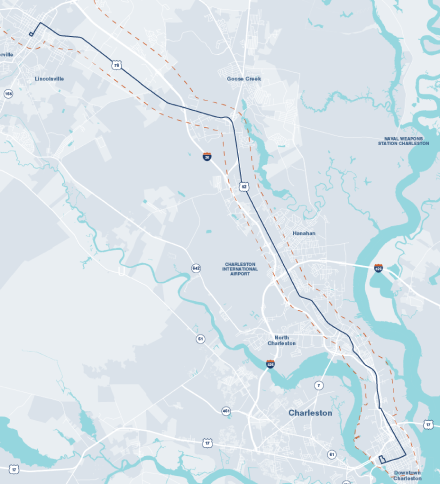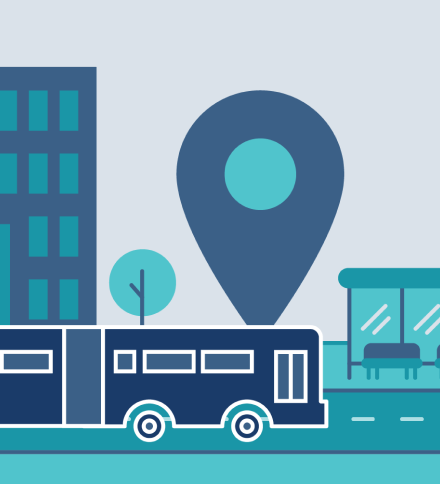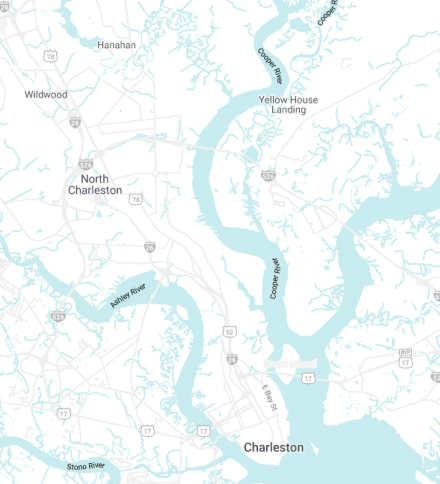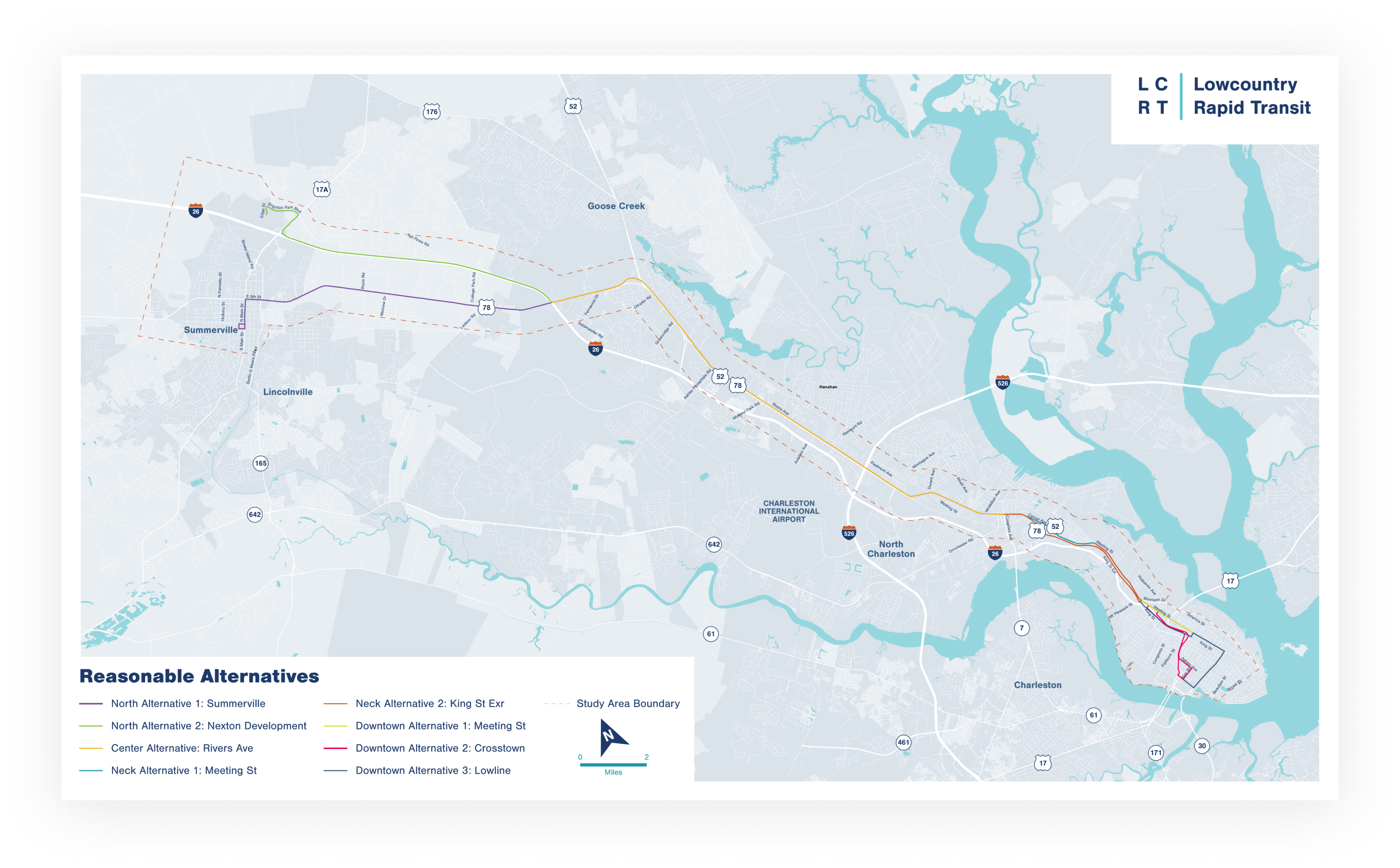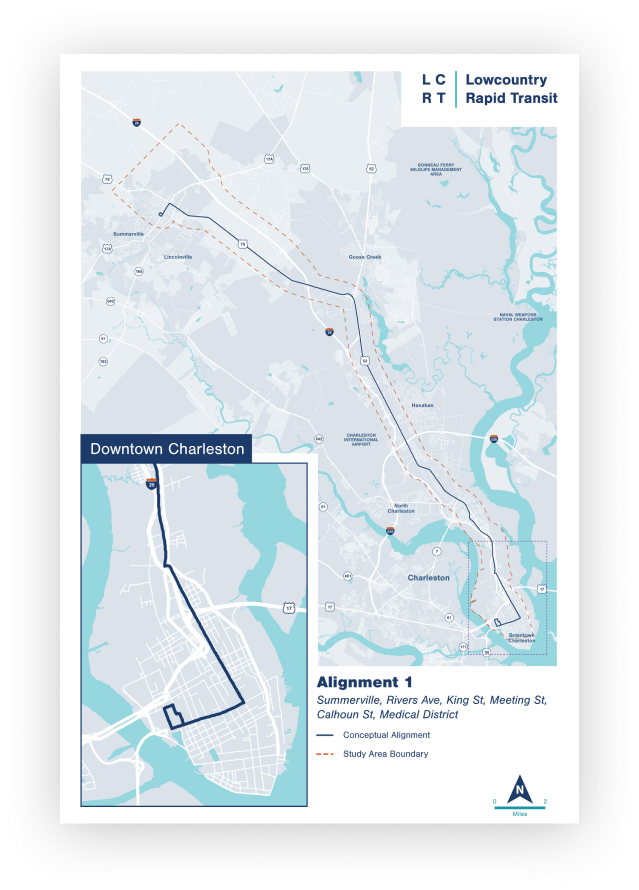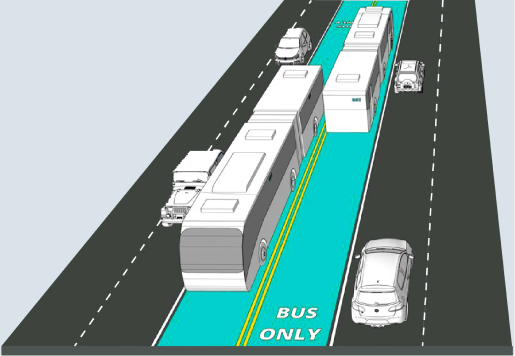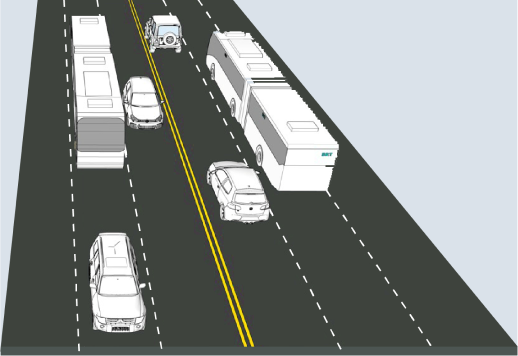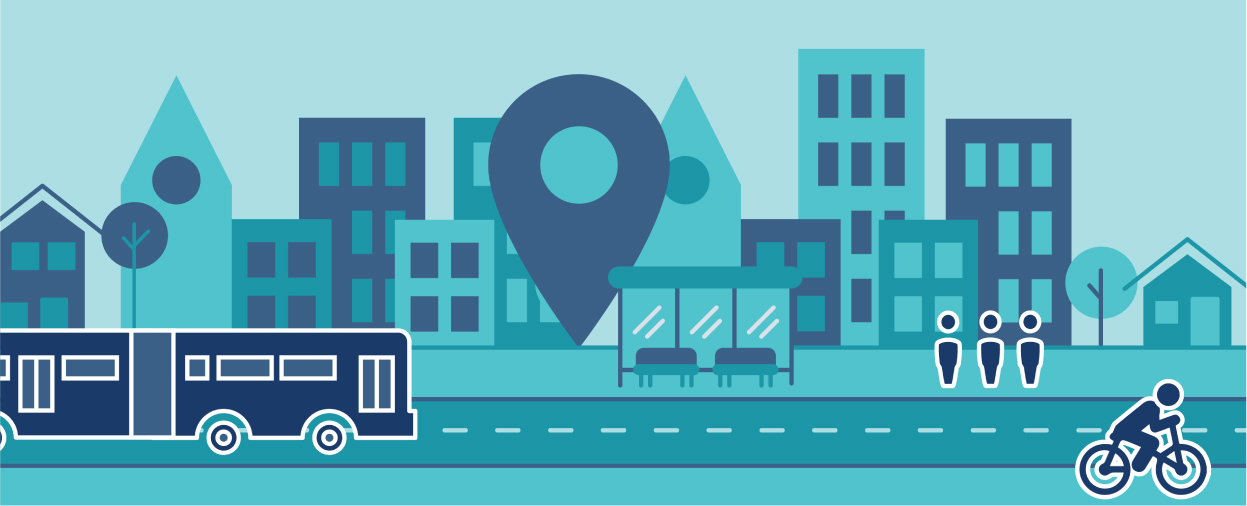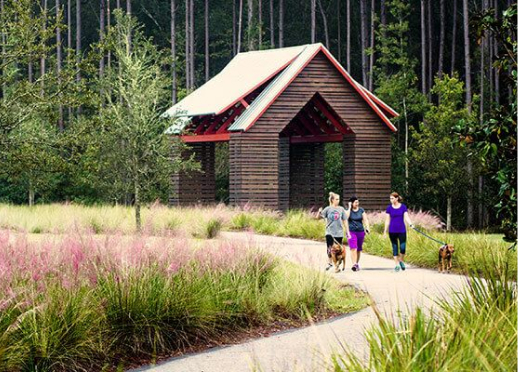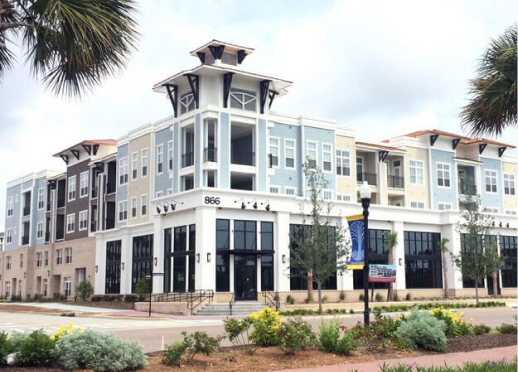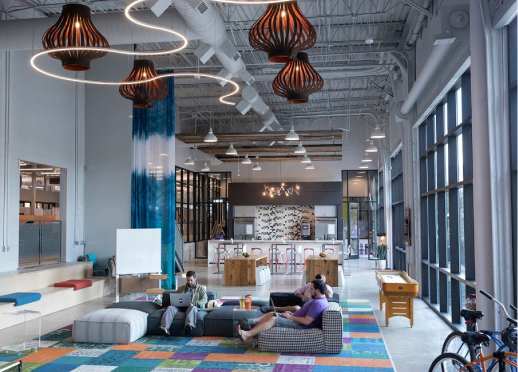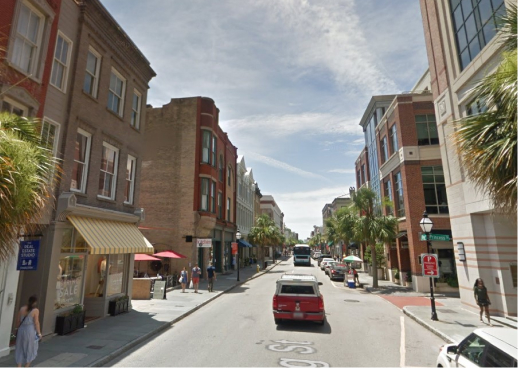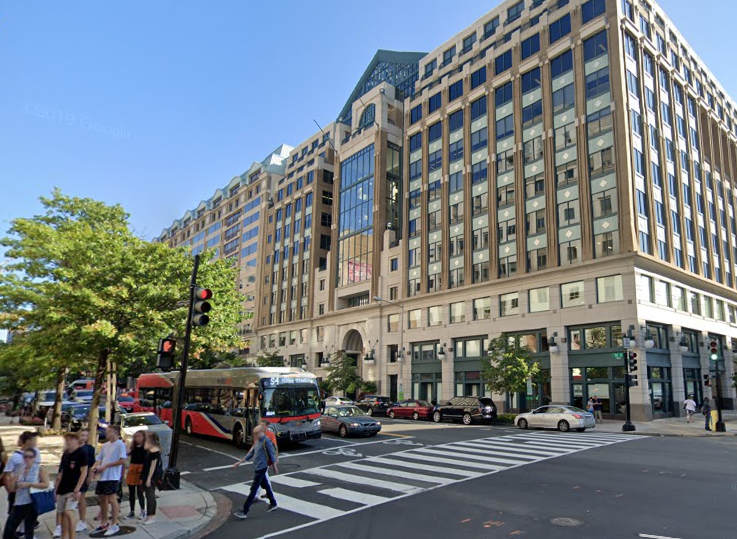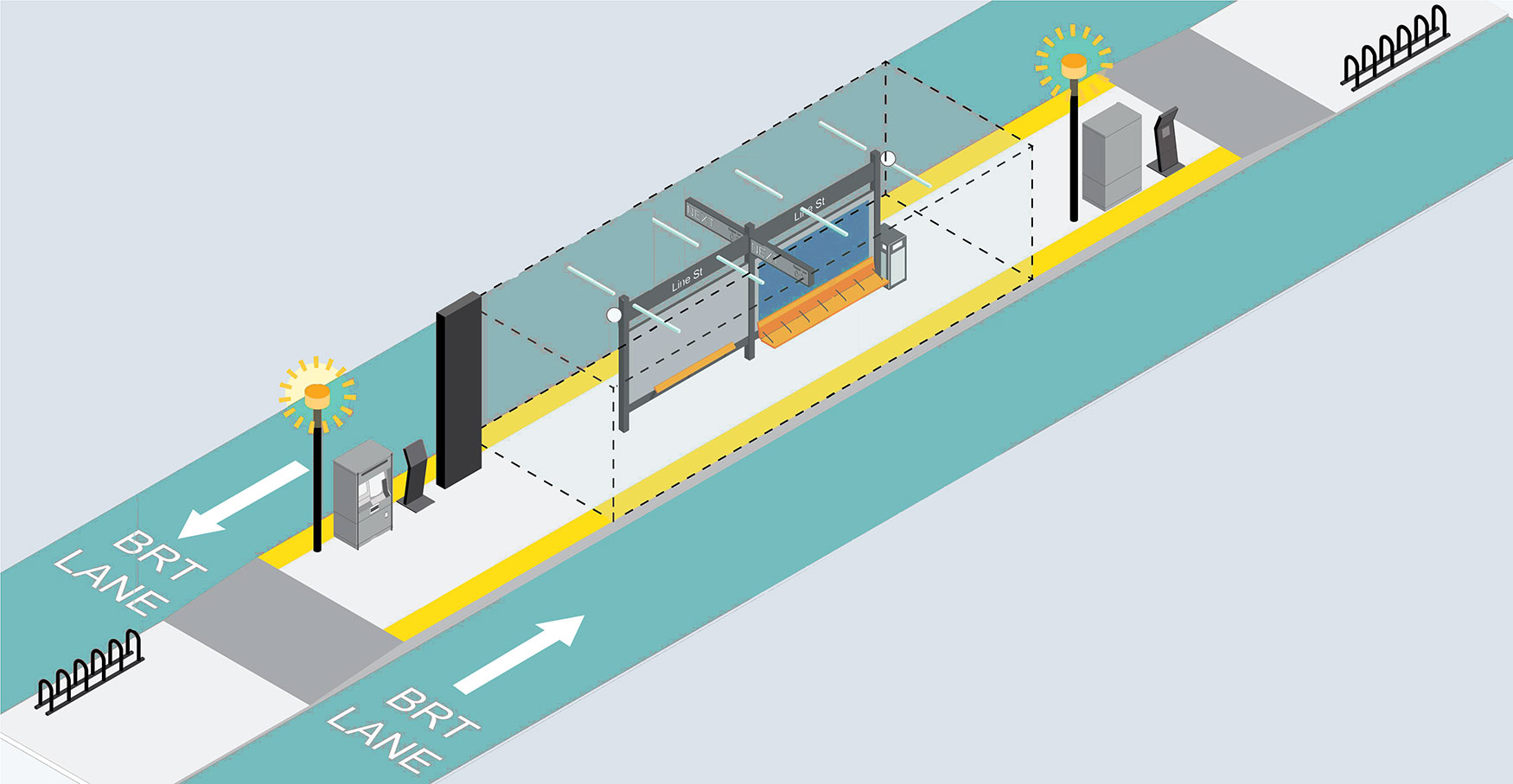LCRT Lowcountry Rapid Transit
Welcome!
Lowcountry Rapid Transit Virtual Public Meeting June 10 - July 10, 2020
Thanks for your interest in South Carolina’s first high-capacity transit system – Lowcountry Rapid Transit! We value your feedback as we push forward with Phase 2 of project development, but we also value your health and safety. That’s why, in accordance with ongoing guidelines in the wake of the COVID-19 pandemic, the project team has elected to host a virtual public meeting to help keep our Lowcountry neighbors healthy. This meeting will feature all of the same materials that would have been available at an in-person meeting, but is available 24/7 now through July 10.
Project Overview
Lowcountry Rapid Transit (LCRT) is a bus rapid transit system that will travel the “spine” of the Lowcountry, along US 78 and US 52 (Rivers Avenue). A comprehensive study conducted by the Berkeley-Charleston-Dorchester Council of Governments (BCDCOG) identified bus rapid transit as the best solution to improve mobility in our region.
LCRT is more than just a bus rapid transit system; the project will transform the infrastructure in our region to improve mobility for people on public transportation, in cars, on foot and on bikes. This system will connect the communities of Charleston, North Charleston and Summerville and will be a catalyst for economic growth and prosperity throughout the area.
New to Bus Rapid Transit?
You can also view our BRT 101 video on the project website by clicking the link below.
View the VideoRecent Progress
We’ve made exciting progress on the project since our last public meeting in June 2019. Some highlights include:
Completed Phase 1 and entered into the FTA’s Project Development phase of the Capital Investment Grant program.
Completed the refinement of the LCRT alignment.
Began the Transit Oriented Development study.
Performed an on-board survey for the origin and destination study. You may have seen us on the bus; thanks for the feedback!
Defined proposed roadway treatments for the LCRT.
Project Timeline
The project timeline below is estimated under the New Starts Capital Investment Grant program guidelines. Select the dots below for specific milestones within each phase.
2014 - 2016 Local Planning
- Pre-Project Development
- Comprehensive Operational Analysis
- Alternatives Analysis
- FTA Guidelines/Travel Demand Forecasting
- Public Engagement
2016 - 2019 Project Programming
- Bus Rapid Transit Preferred Alternative Identified
- 2016 Half-cent sales tax referendum passed in Charleston County
- Agency Coordination
- Informal Scoping & NEPA Checklist
- Identify Funding & Schedule LRTP
- Existing Conditions Evaluation & Conceptual Design (10%)
- NEPA Class of Action & Initiate NEPA Scoping*
- Request Entry into Project Development*
2019 - 2023 Capital Investment Grant Program
- Project Development
We are here
- Complete NEPA
- Adopt a Locally Preferred Alternative
- Complete 30% Design
- Must Receive Medium Rating for Project Justification & Financial Commitment Criteria*
- Engineering
- Significant Progress with Engineering
- Recommended for Construction Grant Agreement
2023 - 2026 Construction
- Construction Begins
- Project Completion
Choose A Meeting Section
Click on one of the tiles below to explore that topic. You may also navigate through the meeting using the tabs at the top of the page.
Route Alternatives Transit Oriented Development Interactive MapRecommended Alternative
Welcome to the interactive map.
Select the highlighted segments to learn about the recommended alternative. Use the tabs above the map to learn about different aspects of the project. Click the button below to start exploring the interactive map.
Click on the colored route segments to learn more about the opportunities and roadway designs of each portion of the corridor.
Summerville/US 78
Corridor Opportunities
Serves established areas
Opportunities for expansion & improvement
Park-and-ride opportunities
Serves transit-dependent communities
Higher ridership than Nexton alternative
Roadway Design
The Summerville/US 78 area of the recommended alternative includes two roadway designs, which would operate in mixed-traffic and peak direction reversible lanes.
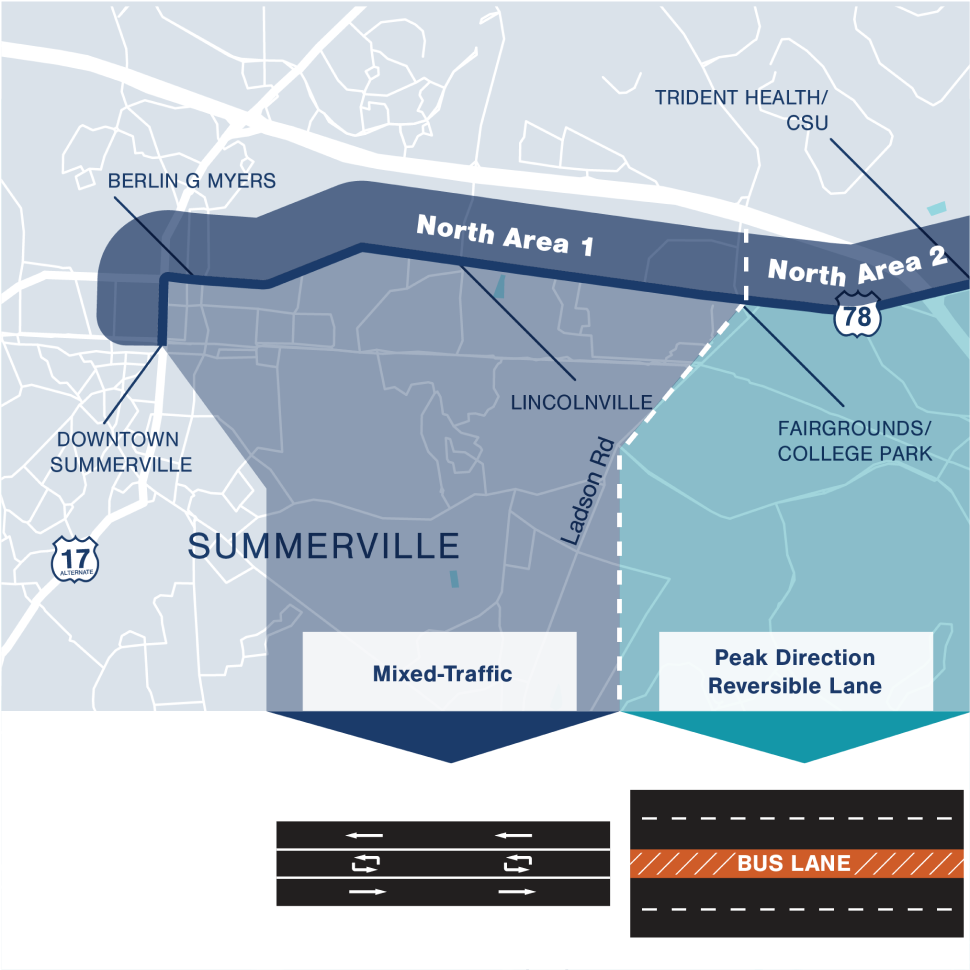
King Street Extension
Corridor Opportunities
One at-grade railroad crossing
Reasonable capital costs
Low impact to project schedule and NEPA
Local community support
Connects transit-dependent communities
Future grants/funding can improve user mobility
Roadway Design
The image below shows the roadway design proposed for the Neck Area of the recommended alternative, which would operate in mixed-traffic.
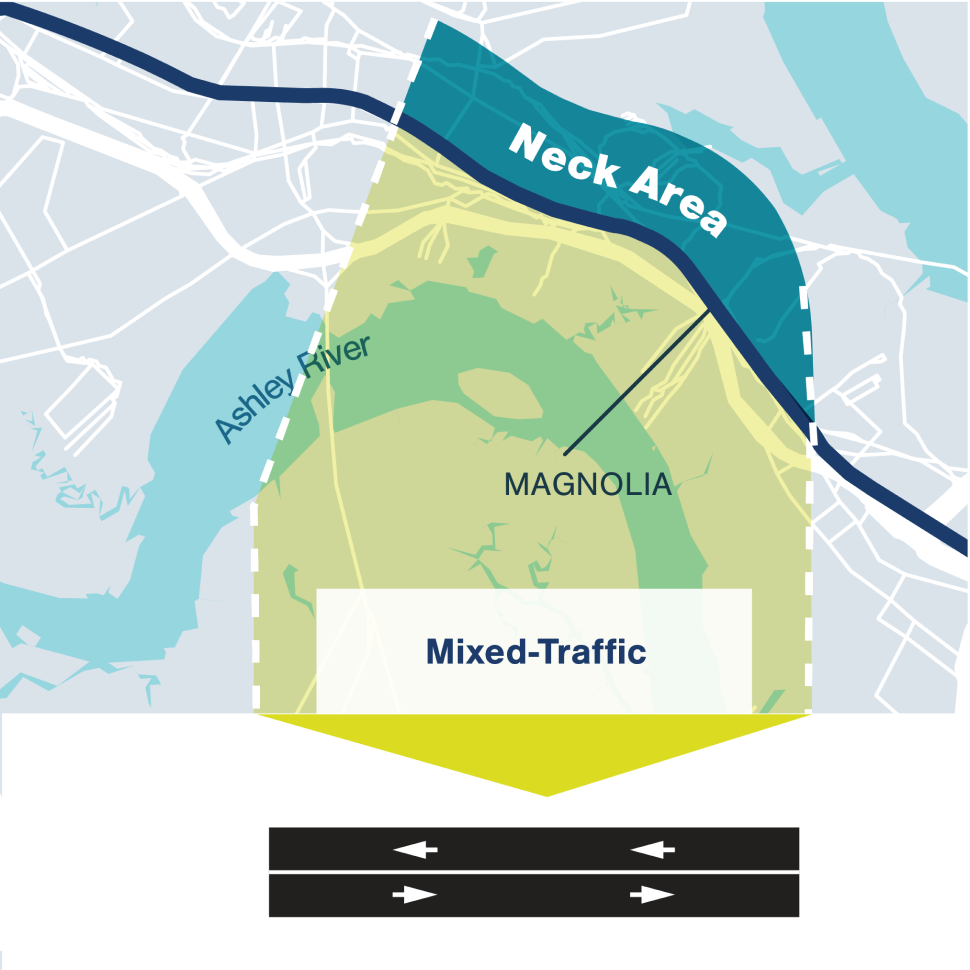
US 78/US 52 (Rivers Avenue)
Corridor Opportunities
Ample right-of-way
Established transit service
Center-running, dedicated BRT lanes
Mix of businesses and residences
Redevelopment potential
BRT enhancements would add to the corridor's safety
Bicycle and pedestrian connectivity
Improvements to un-signalized lefts and u-turns
Roadway Design
The Rivers Avenue area of the recommended alternative includes three different roadway designs, which would operate in center-running BRT lanes.
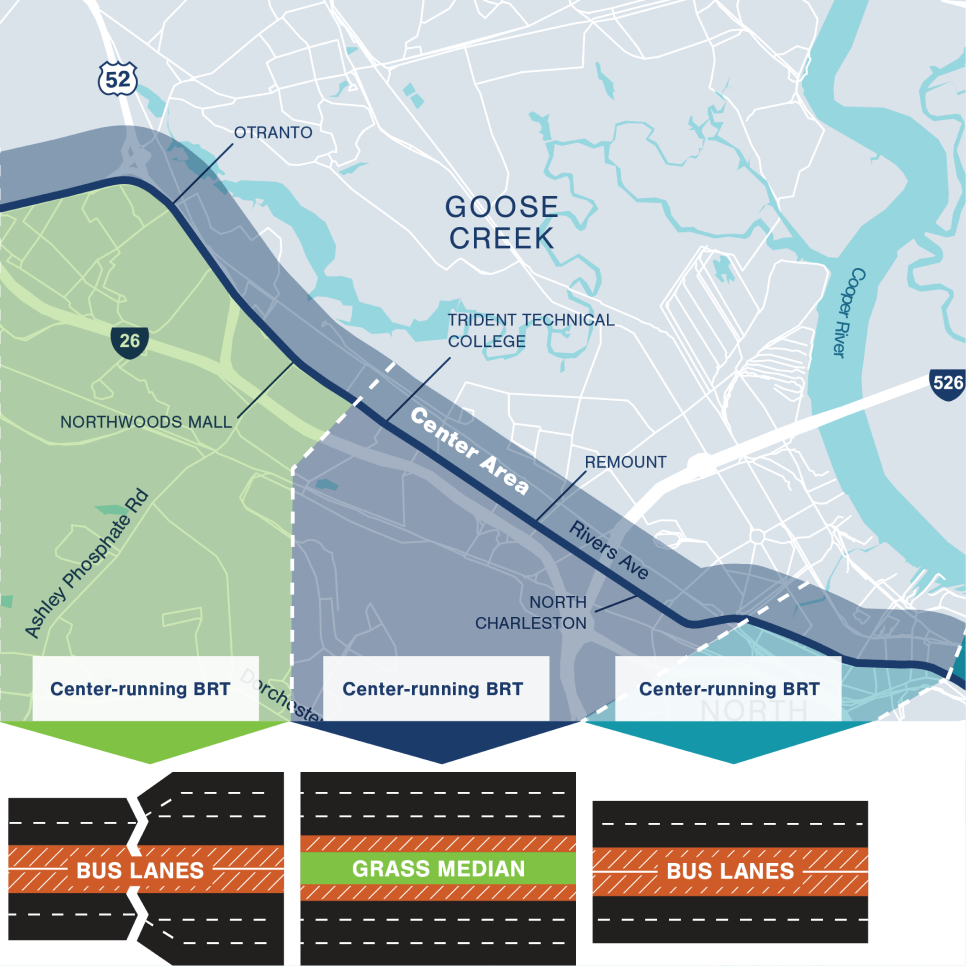
Meeting Street/Calhoun Street
Corridor Opportunities
Higher ridership
Less bicycle and pedestrian impact
More redevelopment potential
Ample bicycle and pedestrian connections
Established fixed-route transit
Established transit market
Serves transit dependent users
Roadway Design
The image below shows the roadway design proposed for the Peninsula Area of the recommended alternative, which would operate in peak hour reversible lanes.
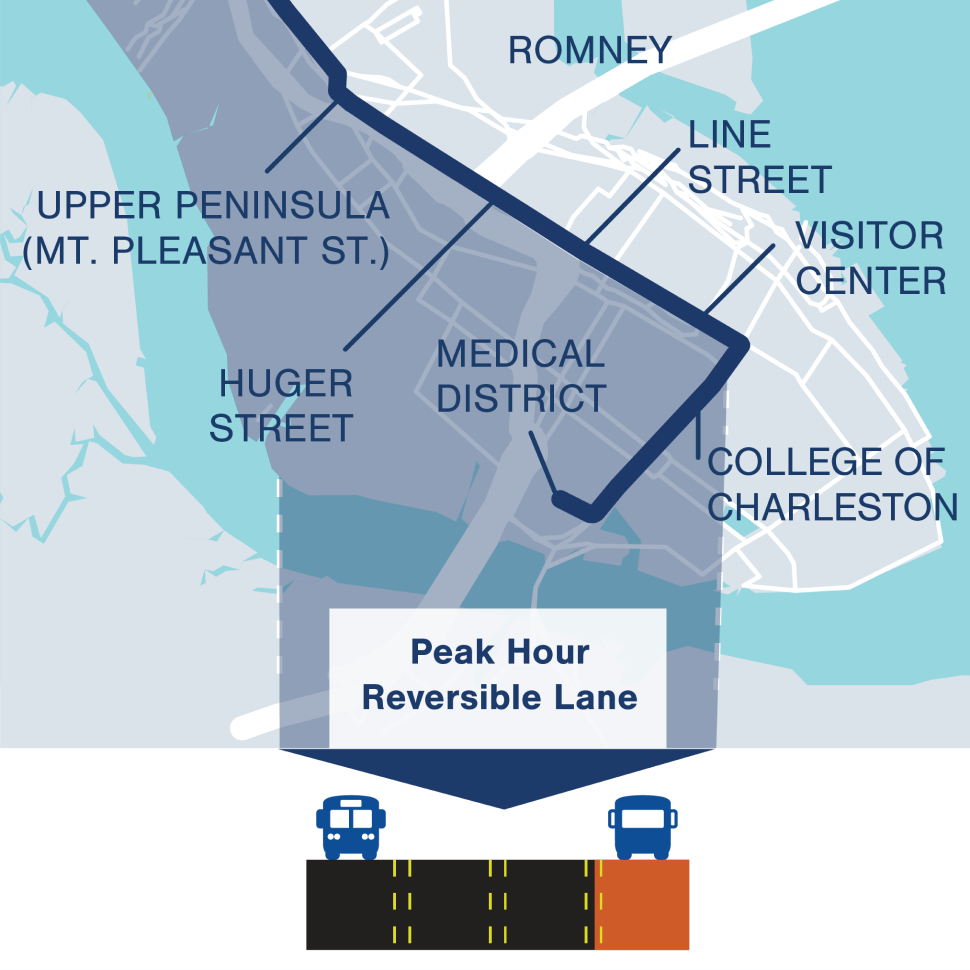
Station Areas
Station Areas
Station area place types were identified based on public input at December workshops and stakeholder interviews and meetings over the past few months. The station areas will be further refined and some will be removed or shifted based on public and stakeholder input. 23 stations are recommended for optimal BRT operation. Click the button below to explore the interactive map and learn more about the proposed station areas.
Click on a station area to view its location and proposed place type. Please note that this list of station areas is not final and will be further refined.
Downtown Summerville
Station Area Place Type: Town Center
Town Center station areas will encourage infill and redevelopment to support a balance of jobs and housing with characteristics like traditional “Main Street” areas. These are centers of commercial and civic activity with shops, restaurants, local businesses and civic and public institutions. These areas are denser than neighborhoods and block sizes are slightly larger. Buildings near the station areas will be between 4 and 8 stories in height.
Berlin Myers Parkway
Station Area Place Type: Neighborhood
Neighborhood station areas will encourage infill and support redevelopment to include mostly residential uses as well as schools, religious gathering places, civic spaces and neighborhood-scale businesses. Block sizes will be small and buildings around the station will generally be 2 to 4 stories in height. These station areas will be the lowest density station areas along the corridor and include key characteristics such as compact development, walkable streets and a mixture of uses.
Lincolnville
Station Area Place Type: Neighborhood
Neighborhood station areas will encourage infill and support redevelopment to include mostly residential uses as well as schools, religious gathering places, civic spaces and neighborhood-scale businesses. Block sizes will be small and buildings around the station will generally be 2 to 4 stories in height. These station areas will be the lowest density station areas along the corridor and include key characteristics such as compact development, walkable streets and a mixture of uses.
College Park
Station Area Place Type: Town Center
Town Center station areas will encourage infill and redevelopment to support a balance of jobs and housing with characteristics like traditional “Main Street” areas. These are centers of commercial and civic activity with shops, restaurants, local businesses and civic and public institutions. These areas are denser than neighborhoods and block sizes are slightly larger. Buildings near the station areas will be between 4 and 8 stories in height.
Trident Health
Station Area Place Type: Employment Hub
Employment Hub station areas are those locations where there will be an emphasis on clustering of jobs, this means traditional office buildings, warehouses and light industrial uses. Block sizes are slightly larger, but the densities are higher with building heights at 6 to 10 stories. There are some residential units in these areas, but a small percentage compared to other place types.
Otranto Road
Station Area Place Type: NeighborhoodNeighborhood station areas will encourage infill and support redevelopment to include mostly residential uses as well as schools, religious gathering places, civic spaces and neighborhood-scale businesses. Block sizes will be small and buildings around the station will generally be 2 to 4 stories in height. These station areas will be the lowest density station areas along the corridor and include key characteristics such as compact development, walkable streets and a mixture of uses.
Trident Technical College
Station Area Place Type: Employment Hub
Employment Hub station areas are those locations where there will be an emphasis on clustering of jobs, this means traditional office buildings, warehouses and light industrial uses. Block sizes are slightly larger, but the densities are higher with building heights at 6 to 10 stories. There are some residential units in these areas, but a small percentage compared to other place types.
Remount Road
Station Area Place Type: Employment Hub
Employment Hub station areas are those locations where there will be an emphasis on clustering of jobs, this means traditional office buildings, warehouses and light industrial uses. Block sizes are slightly larger, but the densities are higher with building heights at 6 to 10 stories. There are some residential units in these areas, but a small percentage compared to other place types.
Station Area Place Type: North Charleston/Mall Drive
Station Area Place Type: Town Center
Town Center station areas will encourage infill and redevelopment to support a balance of jobs and housing with characteristics like traditional “Main Street” areas. These are centers of commercial and civic activity with shops, restaurants, local businesses and civic and public institutions. These areas are denser than neighborhoods and block sizes are slightly larger. Buildings near the station areas will be between 4 and 8 stories in height.
North Charleston/Mall Drive
Station Area Place Type: Town Center
Town Center station areas will encourage infill and redevelopment to support a balance of jobs and housing with characteristics like traditional “Main Street” areas. These are centers of commercial and civic activity with shops, restaurants, local businesses and civic and public institutions. These areas are denser than neighborhoods and block sizes are slightly larger. Buildings near the station areas will be between 4 and 8 stories in height.
Rivers Avenue & Reynolds Avenue
Station Area Place Type: Town Center
Town Center station areas will encourage infill and redevelopment to support a balance of jobs and housing with characteristics like traditional “Main Street” areas. These are centers of commercial and civic activity with shops, restaurants, local businesses and civic and public institutions. These areas are denser than neighborhoods and block sizes are slightly larger. Buildings near the station areas will be between 4 and 8 stories in height.
Calhoun Street & King Street
Station Area Place Type: Downtown Employment Hub
Downtown Employment Hub station areas will be the highest density station areas. Characteristics include a high concentration of jobs in offices, institutions, healthcare, retail and hospitality. Some high density residential areas will be located nearby. These areas have smaller block sizes with building heights at 10 stories or higher.
Medical District
Station Area Place Type: Downtown Employment Hub
Downtown Employment Hub station areas will be the highest density station areas. Characteristics include a high concentration of jobs in offices, institutions, healthcare, retail and hospitality. Some high density residential areas will be located nearby. These areas have smaller block sizes with building heights at 10 stories or higher.
Meeting Street & Mary Street
Station Area Place Type: Downtown NeighborhoodDowntown Neighborhood station areas will be predominantly residential in character with a mix of housing, including high density single family homes, townhouses, multi-family apartments and condos. Characteristics include nearby non-residential neighborhood amenities such as shopping, restaurants, civic spaces, parks, local businesses and other employment-based uses. Buildings will be 2 to 6 stories in height.
Shipwatch Square
Station Area Place Type: Downtown Neighborhood
Downtown Neighborhood station areas will be predominantly residential in character with a mix of housing, including high density single family homes, townhouses, multi-family apartments and condos. Characteristics include nearby non-residential neighborhood amenities such as shopping, restaurants, civic spaces, parks, local businesses and other employment-based uses. Buildings will be 2 to 6 stories in height.
Stromboli Avenue
Station Area Place Type: Neighborhood
Neighborhood station areas will encourage infill and support redevelopment to include mostly residential uses as well as schools, religious gathering places, civic spaces and neighborhood-scale businesses. Block sizes will be small and buildings around the station will generally be 2 to 4 stories in height. These station areas will be the lowest density station areas along the corridor and include key characteristics such as compact development, walkable streets and a mixture of uses.
Upper Peninsula (Mt. Pleasant Street)
Station Area Place Type: Employment Hub
Employment Hub station areas are those locations where there will be an emphasis on clustering of jobs, this means traditional office buildings, warehouses and light industrial uses. Block sizes are slightly larger, but the densities are higher with building heights at 6 to 10 stories. There are some residential units in these areas, but a small percentage compared to other place types.
Meeting Street & Romney Street
Station Area Place Type: Downtown Employment Hub
Downtown Employment Hub station areas will be the highest density station areas. Characteristics include a high concentration of jobs in offices, institutions, healthcare, retail and hospitality. Some high density residential areas will be located nearby. These areas have smaller block sizes with building heights at 10 stories or higher.
Meeting Street & Huger Street
Station Area Place Type: Downtown Employment Hub
Downtown Employment Hub station areas will be the highest density station areas. Characteristics include a high concentration of jobs in offices, institutions, healthcare, retail and hospitality. Some high density residential areas will be located nearby. These areas have smaller block sizes with building heights at 10 stories or higher.
Northwoods Mall
Station Area Place Type: Town Center
Town Center station areas will encourage infill and redevelopment to support a balance of jobs and housing with characteristics like traditional “Main Street” areas. These are centers of commercial and civic activity with shops, restaurants, local businesses and civic and public institutions. These areas are denser than neighborhoods and block sizes are slightly larger. Buildings near the station areas will be between 4 and 8 stories in height.
US 78 & Owens Drive
Station Area Place Type: Neighborhood
Neighborhood station areas will encourage infill and support redevelopment to include mostly residential uses as well as schools, religious gathering places, civic spaces and neighborhood-scale businesses. Block sizes will be small and buildings around the station will generally be 2 to 4 stories in height. These station areas will be the lowest density station areas along the corridor and include key characteristics such as compact development, walkable streets and a mixture of uses.
US 78 & I-26
Station Area Place Type: Employment Hub
Employment Hub station areas are those locations where there will be an emphasis on clustering of jobs, this means traditional office buildings, warehouses and light industrial uses. Block sizes are slightly larger, but the densities are higher with building heights at 6 to 10 stories. There are some residential units in these areas, but a small percentage compared to other place types.
Hanahan Road
Station Area Place Type: Town Center
Town Center station areas will encourage infill and redevelopment to support a balance of jobs and housing with characteristics like traditional “Main Street” areas. These are centers of commercial and civic activity with shops, restaurants, local businesses and civic and public institutions. These areas are denser than neighborhoods and block sizes are slightly larger. Buildings near the station areas will be between 4 and 8 stories in height.
Aviation Avenue
Station Area Place Type: Employment Hub
Employment Hub station areas are those locations where there will be an emphasis on clustering of jobs, this means traditional office buildings, warehouses and light industrial uses. Block sizes are slightly larger, but the densities are higher with building heights at 6 to 10 stories. There are some residential units in these areas, but a small percentage compared to other place types.
Durant Avenue
Station Area Place Type: Town Center
Town Center station areas will encourage infill and redevelopment to support a balance of jobs and housing with characteristics like traditional “Main Street” areas. These are centers of commercial and civic activity with shops, restaurants, local businesses and civic and public institutions. These areas are denser than neighborhoods and block sizes are slightly larger. Buildings near the station areas will be between 4 and 8 stories in height.
Hackemann Avenue
Station Area Place Type: NeighborhoodNeighborhood station areas will encourage infill and support redevelopment to include mostly residential uses as well as schools, religious gathering places, civic spaces and neighborhood-scale businesses. Block sizes will be small and buildings around the station will generally be 2 to 4 stories in height. These station areas will be the lowest density station areas along the corridor and include key characteristics such as compact development, walkable streets and a mixture of uses.
Pacific Box & Crate
Station Area Place Type: Neighborhood
Neighborhood station areas will encourage infill and support redevelopment to include mostly residential uses as well as schools, religious gathering places, civic spaces and neighborhood-scale businesses. Block sizes will be small and buildings around the station will generally be 2 to 4 stories in height. These station areas will be the lowest density station areas along the corridor and include key characteristics such as compact development, walkable streets and a mixture of uses.

